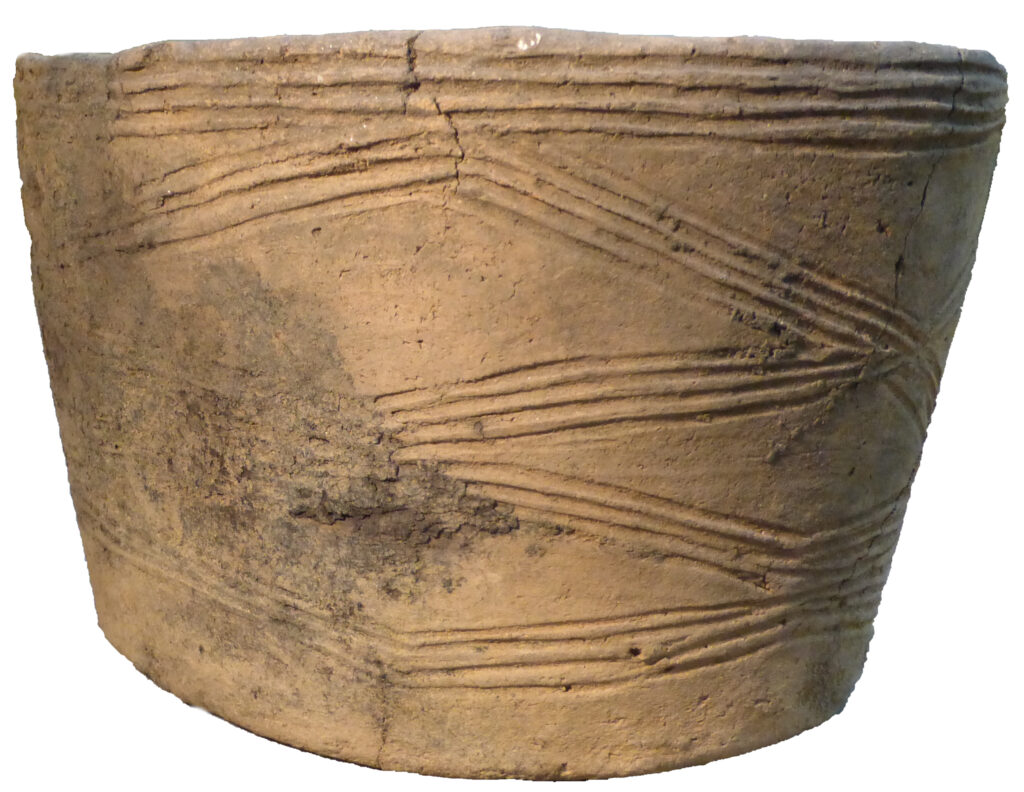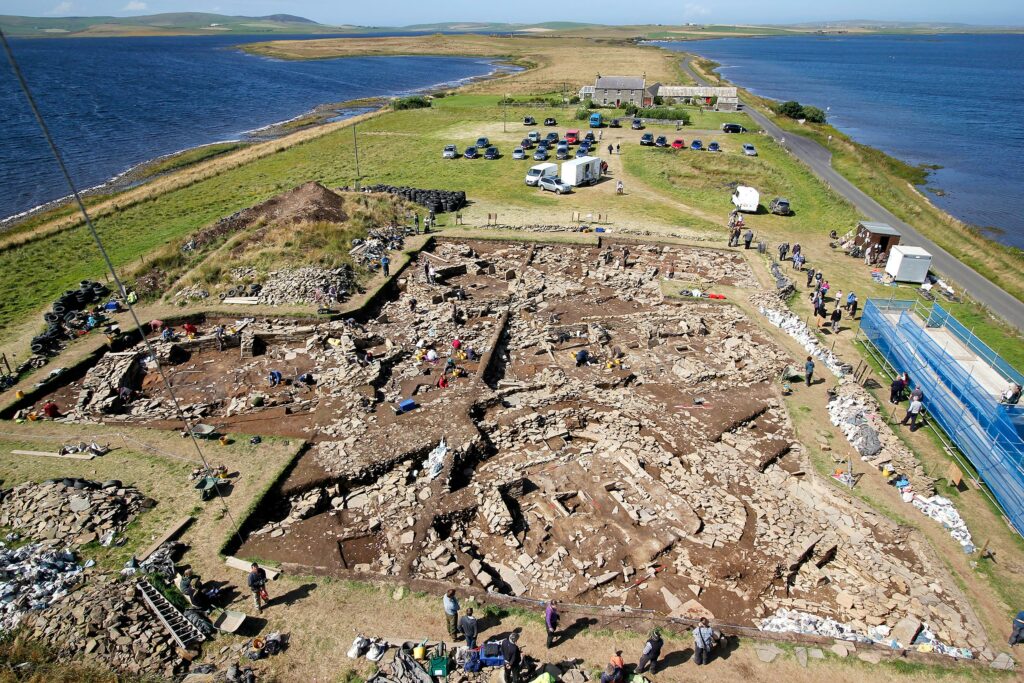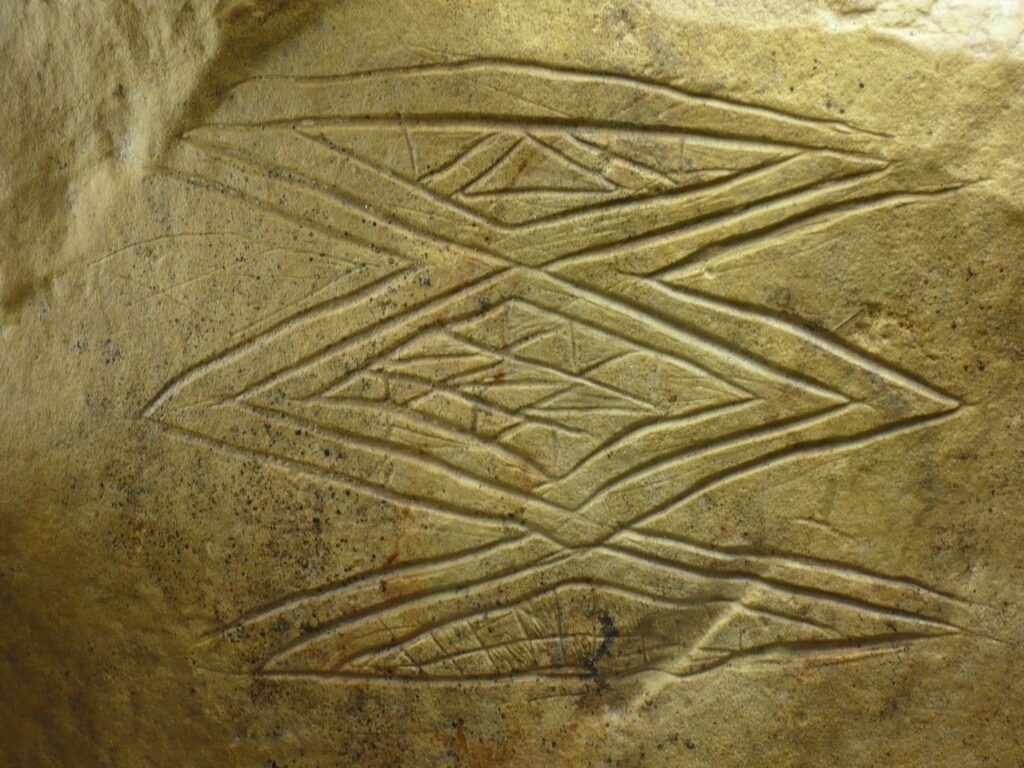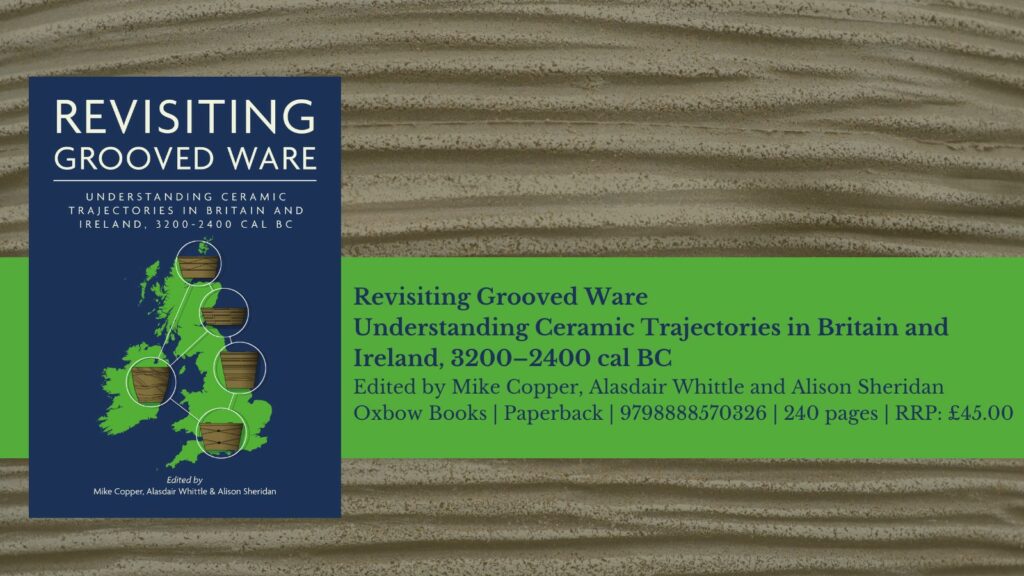What Grooved Ware Can Teach us about Social Developments in the Late 4th and Early 3rd Millennia BC.
This groovy blog by Mike Copper, co-editor of Revisiting Grooved Ware, will take you on a journey from Orkney to Cornwall and beyond, following the rise and demise of Grooved Ware, and revealing the insights into the ‘ Late Neolithic’ that this pottery phenomenon can provide.
By Mike Copper | 3.5 min read
The Neolithic (or Late Stone Age) was a period of significant cultural dynamism in Britain and Ireland. From the introduction of agriculture by continental migrants around 6000 years ago to the appearance of the first metals at around 2500 BC, new and constantly evolving forms of society developed and interacted across the islands. For archaeologists seeking to understand these changes, artefacts are a key resource. In this regard, pottery is of particular value as its constantly evolving shapes and decorative motifs reflect the development and sharing of ideas within and between communities. In the last couple of centuries of the fourth millennium BC, however, a dramatic break occurred in the steady evolution of ceramic styles that suggests that something significant happened.

At this time, an entirely new type of pottery, known to archaeologists as Grooved Ware on account of its incised, geometric decoration, was developed in Orkney. By the first century of the third millennium BC, Grooved Ware was in use as far away as Cornwall, replacing all previously existing ceramic styles. Intriguingly, at around the same time, new types of artefact, including polished stone maceheads and enigmatic carved stone balls, along with novel forms of monument such as great circles of timber or stone, were also being adopted across wide areas. What was the significance of these changes? And why would communities from the far north of Scotland to the southern tip of England and the west coast of Ireland suddenly abandon their local ceramic traditions and adopt this exotic new style of pot instead?

While understandings of the Neolithic vary greatly between archaeologists the data available to us constrain what can reasonably be said, and consensus is emerging on many significant issues concerning Grooved Ware. With this in mind, our new edited volume, Revisiting Grooved Ware, presents not only the latest thinking on how the Grooved Ware phenomenon played out across Britain and Ireland but also new perspectives on what it means for our understanding of social developments in the late 4th and early 3rd millennia BC.

What, then can Grooved Ware teach us about society in what archaeologists term the Late Neolithic? Recent work in Orkney, and especially at and around the dramatic complex of stone buildings known as the Ness of Brodgar, has highlighted the importance of these islands in the centuries either side of 3000 BC. The sharing of monumental, artistic and artefactual forms between Orkney and the Boyne Valley in Ireland shows that at least some people in these regions were in regular contact. Recently, DNA evidence has demonstrated that people buried in monumental, occasionally elaborately decorated ‘passage tombs’ in Ireland were often closely related, suggestive of society in which certain people held special status. Could these people have been the political, social or religious elite of the time? If so, then they evidently maintained regular contact with their peers in different regions, perhaps travelling long distances to take part in significant events, with ideas and artefacts being passed between communities as a result.

It is possible that Grooved Ware pottery was deliberately invented in Orkney as part of the paraphernalia of feasting appropriate to such encounters and was then adopted elsewhere by groups wishing to buy into a newly developing pan-insular community. Perhaps other, now invisible things were exchanged at the same time: new religious cults perhaps, or novel ways of preparing and serving food, of dressing or of speaking? This is not to say that Britain and Ireland were united as a single entity: it is possible, for example, that the various regions were involved in some form of prehistoric Game of Thrones, intermarrying at one moment and fighting the next. Though even ideas about how best to fight your neighbours can be shared!

With time, Grooved Ware pottery developed distinctive regional sub-styles in Orkney and Ireland, while in most of Britain two distinctive forms of Grooved Ware ended up in use at the same time, though we are not yet sure why. By around 2500 BC, though, Grooved Ware’s days were numbered. A new ceramic style called Beaker pottery was introduced from the Continent, brought by migrants whose genetic ancestry derived ultimately from forbears living to the north of the Black Sea. It was not only Grooved Ware that disappeared at this time. Gone were the great monuments of earth, wood and stone, and important people were now buried individually under round, earthen mounds or in stone cists, occasionally accompanied by artefacts of copper or bronze. We are not certain how much overlap there was between these ways of life, but Grooved Ware, and the world it represented, would all but disappear from memory until the development of modern archaeology.
Revisiting Grooved Ware is available now from the Pen and Sword Books website.

Featured image credit: Giulia Hetherington on Unsplash

 Follow
Follow